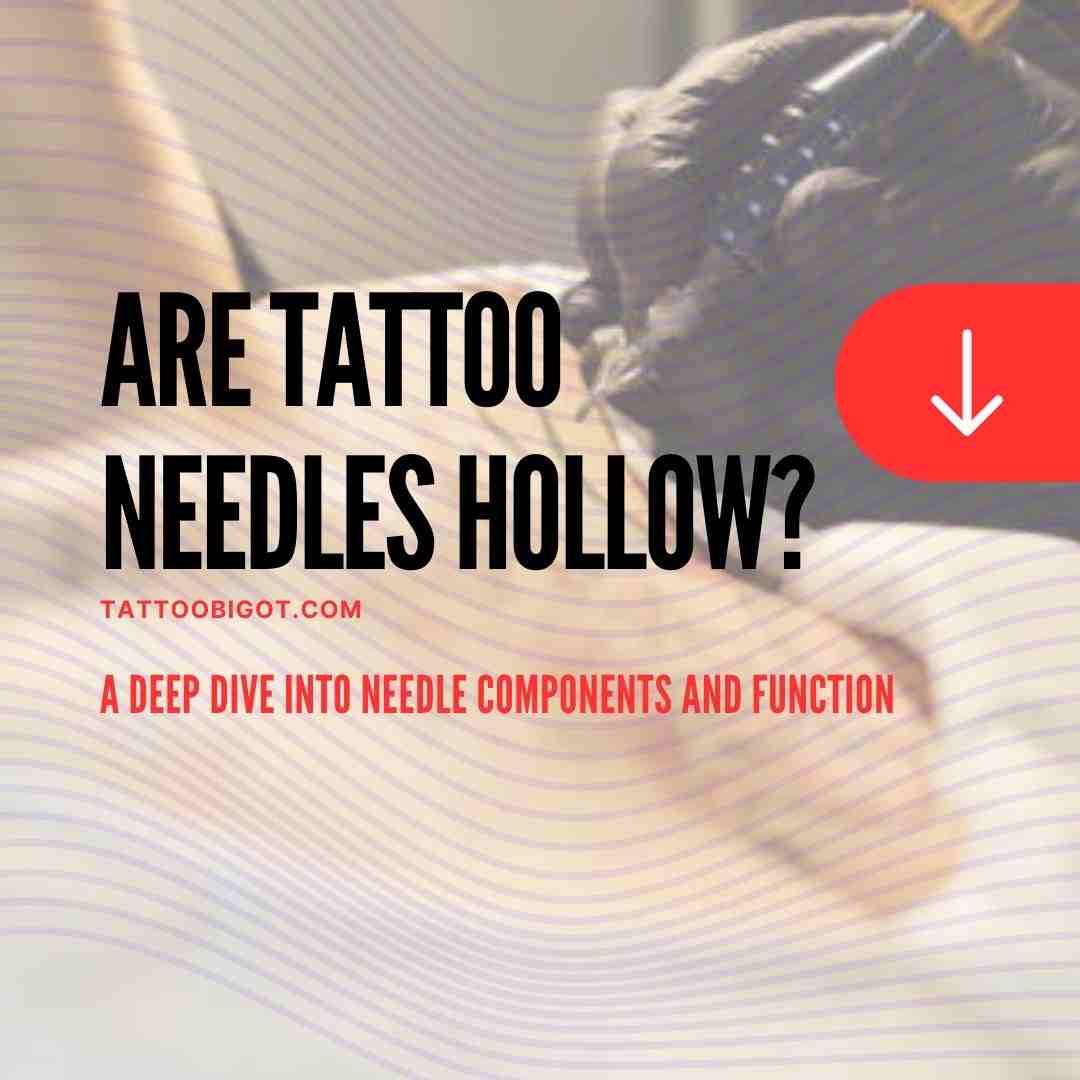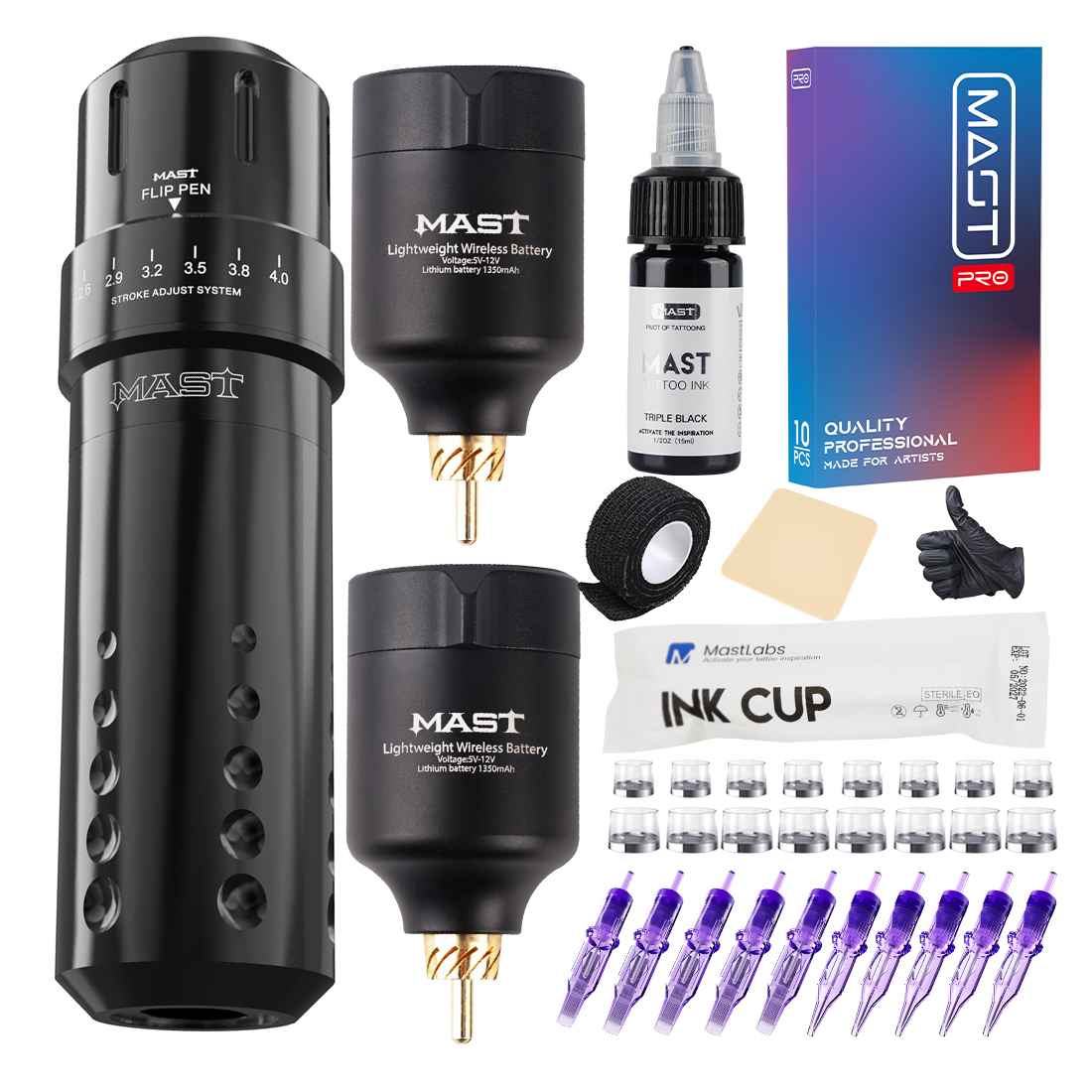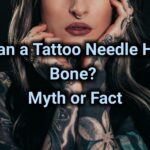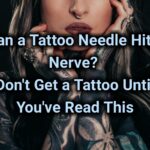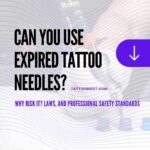The needles used for tattooing play a critical role in precision, efficiency, and client safety during the inking process. But common questions come up like – are tattoo needles actually hollow?
Understanding the intricacies of needle design helps demystify how these consumable tattoo components deposit color into the skin.
With that said, it brings us to the question – are tattoo needles hollow? The truth be told, they are not. It’s a common misconception that tattoo needles are hollow, so they’d allow tattoo ink to flow through them.
In this comprehensive guide, we’ll closely examine modern tattoo needle configurations, key parts, tip variations, how ink flows, common misconceptions about needle hollowness, and recommendations for needle selection based on tattoo styles and techniques. Then, you’ll understand why hollow tattoo needles are not used.
Tattoo Needle Basics
Tattoo needles refer to tiny metal instrument tips encased in needle bars that penetrate the skin while performing a tattoo. They usually consist of 3-25 individual needle points soldered together and threaded into a tip tube.
Needles extend past the tube anywhere from a barely protruding 1mm up to around 10mm for the needle grouping’s total length. During operation, electromagnetic coils rapidly thrust needles up and down, driving pigment into the skin with precision.
High-grade steel alloys like surgical-grade stainless steel allow needles to be sterilized safely and retain shape over hours of tattooing. Quality needles offer sharp, consistent performance without defects.
Main Components of Modern Tattoo Needles
Though diminutive in size, tattoo needles contain intricate engineering enabling fluid ink delivery:
– Needle points – The tiny clustered lancets that actually pierce the skin, usually 3-25 in a group.
– Tip tube – Houses the needle points securely, threading into the needle bar below. Often made of polished brass.
– Needle stem – The solid shaft that gets driven by the machine to move the needle up and down.
– Needle bar – Outer casing that threads into the tattoo machine and holds all inner needle components stable.
– Solder joints – Securely bond needle points together at the proper configuration and angle.
Precisely fabricating and assembling these miniature parts makes needles function optimally during tattooing.
Also Read: What is Tattoo Transfer Gel? A Guide to Using Transfer Products for Stencils
Are Tattoo Needle Tips Hollow?
A common misconception is that tattoo needles must be hollow to deliver ink under the skin. However, standard needles contain solid, non-hollow lancets.
It’s the dozens of micro-perforations made by the needle points penetrating swiftly up and down that allow ink to seep into the dermis. Capillary action pulls ink from the welling droplets at the surface down into these needle-created channels.
If needles were fully hollow, frequent clogging issues would occur. Delicate hollow tips would also dull rapidly. There are specialty hollow needle variations for unique tattoo effects. But in general, standard tattoo needles utilize solid, non-hollow points.
Tattoo Needle Point Styles and Purposes
While the overall needle components are consistent, the lancet points soldered into the tip can vary based on the intended tattoo function:
– Round points – All-purpose points for shading, lining, and coloring. Round 3-7 needle configurations cover most tattoo needs.
– Flat points – Blade-like edges create fine lines. Often used for delicate designs and details.
– Magnum points – Large diameter flat points suit bold graphic lining requiring more ink flow.
– Soft shaders – Round-tipped needles more gently saturate color for smoother blends.
– Textured points – Varied shapes like waves or spears create artistic dot patterns and textures.
– Ball points – Rounded full-ball tips for graphic shading with silky depth.
Point types like magnums and soft shaders don’t equate to bigger needle gauge sizes. The metal diameter remains the same, just tipped differently.
Also Read: Can You Use Expired Tattoo Needles? Why Risk It? Laws, and Professional Safety Standards
Common Tattoo Needle Configurations and Uses
Needle groupings for the tip points also vary based on intended tattoo purposes:
– Liners – Consist of 3-5 needles aligned tightly for thin detailing and outlining.
– Shaders – Wider 5-7 needle arrangements allow shading broader sections.
– Color fillers – 7 or more needles quickly saturate blocks of color like background tints.
– Magnum shaders – Uses flat magnum points in tight 5-7 groupings for vivid graphic work.
– Soft shaders – Round-tipped needle fans softly blend colors with silky gradients.
– Bugpin shaders – Alternating needle heights create dotted shading textures.
Aligning needle points into optimal groupings maximizes the best effects for each tattooing technique.
Tattoo Needle Sizes and Gauge Meanings
The needle gauge indicates the actual diameter of the metal needles used. Standard sizes include:
– 3RL – .3mm – Ultra-fine outlining needles for minute details like text and single-pass eyeliner tattoos.
– 5RL – .35mm – Slightly larger needles for crisp detailing and lettering. Most common liner choice.
– 7RL – .40mm – Mid-sized needles suitable for both lining and lighter shading duties.
– 9RL – .45mm – Larger needles for bolder lining or soft shading spreads.
– 11+RL – .50mm+ – Big diameter needles for intense sharp outlines or heavy shading.
The higher the gauge number, the smaller the needle diameter used. This helps artists select optimal sizes based on designs.
Also Read: Do Pawn Shops Take Tattoo Equipment? What to Know Before Selling or Buying
How Does Ink Flow Into Skin When Using Tattoo Needles?
Since the needles themselves remain solid, the ink transfer process relies on the following mechanisms (back to some high school physics).
Capillary Action – The perforations made by the needle points well up with blood and fluids. Capillary forces then draw the applied ink down these microscopic channels into the dermis.
Gravity – As needles withdraw upward, ink droplets coating the area get pulled into the open punctures through gravity and absorption before they close up.
Shockwaves – Faster reciprocating needles can drive the ink into channels through vibrational shockwaves as tissue compresses.
Density – Closely packed needle configurations prevent punctures from sealing as fast, giving more time for ink migration.
So, while not truly hollow, needle groupings do effectively pull and deliver tattoo inks into the skin by displacement and fluid dynamics when oscillating rhythmically.
Why are Hollow Tattoo Needles Rarely Used?
Though hypothetically, they would inject ink directly, hollow needles present multiple difficulties:
- Fragile hollow tips easily bend or break under stress.
- Permanently affixed hoses restrict artist movement.
- The inner diameter limits ink flow, requiring constant refills.
- Clogging risks increase with thicker pigments.
- Precise engineering is complex and expensive.
- Hollow components prohibit sterilization methods like autoclaving.
For these reasons, reliable solid needles remain the standard. However, improved modern hollow needle engineering offers unique potential.
What Are the Pros and Cons of Newer Hollow Needle Designs?
Now, even though hollow tattoo needles are prevalent, it doesn’t stop their development. Recent advancements in hollow needle technology provide intriguing benefits but also some limitations:
Pros:
- Delivers ink directly into punctures without mess or waste.
- Wider bore hollow points allow thicker inks.
- Interchangeable, disposable tip tubes prevent clogging.
- Easier to control ink saturation and shading gradients.
Cons:
- Still prone to clogging compared to solid needles.
- Individual hoses restrict artist movement and needle angle options.
- Hollow components can complicate sterilization.
- The cost is higher per needle.
- Limited availability compared to standard needles.
While still finding their niche, improved hollow needles show promising versatility going forward.
Also Read: Why Do Tattoo Artists Wrap Their Machines? Exploring This Essential Practice
Recommended Tattoo Needle Types for Various Tattoo Purposes
Here are the tattoo neeles types I’ll recommend you to have;
Linework and detailing:
- 3RL-5RL needles for thin, crisp line tattoos.
- 5RL-7RL needles for broader linework requiring more ink flow.
- 7RL and above suit deep solid fill lining for graphic pieces.
- Flat needle liners create ultra-fine script and lettering.
Shading:
- 7RS-9RS needles for gradual, blended shading.
- Soft shaders or ball tip needles provide silky smooth shaded textures.
- 11RS+ needles lay in solid shading for powerful graphic impact.
- Bugpin needles generate artistic dot shading effects.
Color packing:
- 9RM-11RM range needles quickly pack vibrant colors.
- 7RM needles for lighter color layers.
- 11RM or higher huge magnum needle groupings saturate color rapidly.
Portraits or fine detail:
- 3RL-5RL needles capture intricate facial features.
- Soft shader points gently model realistic textures.
- Careful layering of shading needles builds dimension.
Cover-ups or heavy blackwork:
- 9RL-11RL needles lay down dense, opaque black ink.
- 7RS-11RS needles pack black shading powerfully.
- Large magnum or flat-bladed groupings provide wide ink coverage.
- With experience, artists learn which needles optimize their unique creative style. But these basics guide beginners in selecting proper needles for desired tattoo effects.
Important Points to Remember About Tattoo Needles
If you’re working with tattoo needles or plan to work with one, or maybe you’re just curious about them, then you must take note of the following important about tattoo needles.
- Modern needles use solid, non-hollow tips despite the common misconception. Ink enters the skin by displacement from the fast reciprocating punctures.
- Numerous needle point types and configurations suit different artistic tattoo purposes like coloring, shading, precision detailing, and more.
- Higher gauge number needles have smaller diameters. Understand sizing to pick the ideal needles for each tattoo.
- Keep plenty of spare needles on hand. Needles dull with use and should be discarded after every client for safety. Use each needle type only for appropriate techniques.
- Take care to insert needles completely straight into bars with o-rings slid down tightly to prevent dangerous breaking or bending under the skin.
- Poor-quality needles lead to complications like pain, scarring, and infections. Invest in needles from reputable brands like FK Irons, Hawink, Black Anchor, Magic Moon, and Killer Ink.
If you’re looking for the best quality tattoo needles, I recommend dragonhawk. Check the Dragonhawk official website for amazing discounts.
Conclusion
With miniature engineering assisting their key role, tattoo needles have evolved into sophisticated instruments for imprinting permanent artwork.
But are tattoo needles hollow? No, underlying the array of available needle components and configurations are solid, non-hollow tips in most standard designs. Generations of experimentation have honed needle technology to deposit inks safely into the dermis.
Yet new hollow needle innovation continues advancing possibilities as well. By understanding fundamental needle anatomy, size variances, and technique-based selection, artists gain full command over their tools.
Tattoo needles ultimately enable artists to share their unique gifts with clients. So, while tiny in scale, these complex metal tips remain a foundational resource for tattoo artistry.
Frequently Asked Questions
Can a single tattoo needle be used for an entire tattoo?
Absolutely not. Needles dull extremely quickly and should be changed every few minutes at most to avoid complications. Use a new sterile needle for each new client.
What should I do if a tattoo needle breaks or bends under my skin?
Do not pull it out. Contact your artist immediately or seek medical assistance to retrieve it safely to avoid leaving any remnants embedded inside.
How can you tell if a tattoo needle is dull and needs replacing?
Signs include excess wiping needed, pain, poor ink delivery, lack of sharp lines, or general difficulty making progress. Replace needles at the first hint of dullness.
Can dulled used tattoo needles be sharpened and reused?
No, dull needles are unusable and considered medical waste. Attempting to reuse or sharpen them would be extremely hazardous. Always discard immediately.
Is a hollow tattoo needle less painful?
Not necessarily. Depth, technique, and skill have more impact on discomfort than needle hollowness. However, some claim the pneumatic action may reduce pain slightly.
How is ink loaded into hollow tattoo needles?
Via attached hoses and ink reservoirs that allow artists to control and regulate flow. Studios using them develop optimal inking techniques over time.
Will a tattoo heal differently if done with a hollow needle?
Standard solid needle tattoos and those from hollow needles generally heal identically. As long as sterile inks and proper techniques were used, the needle type presents no healing issues.
Are all needle point shapes compatible with hollow tattoo needles?
Currently, hollow configurations only accommodate traditional round needle point options. Specialized point shapes like magnum or soft shader tips are not yet adaptable to hollow technology.
How often do hollow needles need to be replaced compared to solid needles?
More frequently – hollow tips clog and degrade faster. However, disposable components minimize time spent unclogging between clients.
Should beginner tattoo artists start with hollow needles?
No, mastering the technique with standard needles is recommended first. But down the road, hollow needles can expand an experienced artist’s skills.
